Aragonite
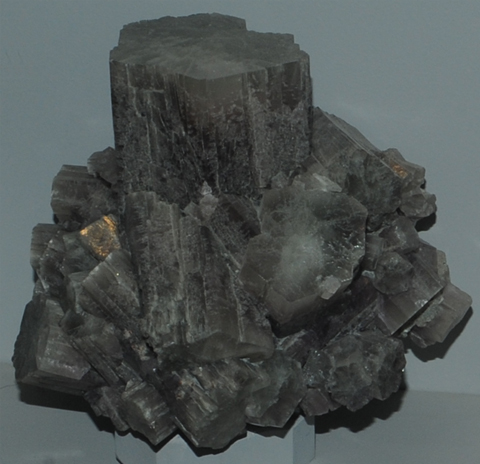 | CaCO3This sample of Aragonite is displayed in the Smithsonian Museum of Natural History. Aragonite is a carbonate mineral which contains calcium with the composition CaCO3. This sample is about 6x6 cm and originated in La Pesquera, Castilla la Mueva, Cuenca, Spain. Aragonite is the second most common form of calcium carbonate after calcite. |
This Aragonite sample is from Pit IX, Touissit, Morocco. It measures about 6x5 cm. It is described as plumboan aragonite with dolomite. |
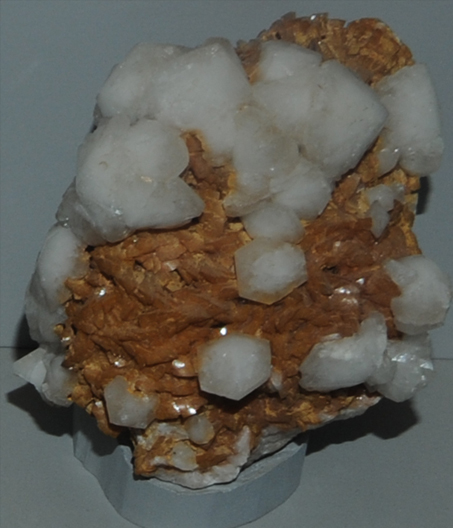 |
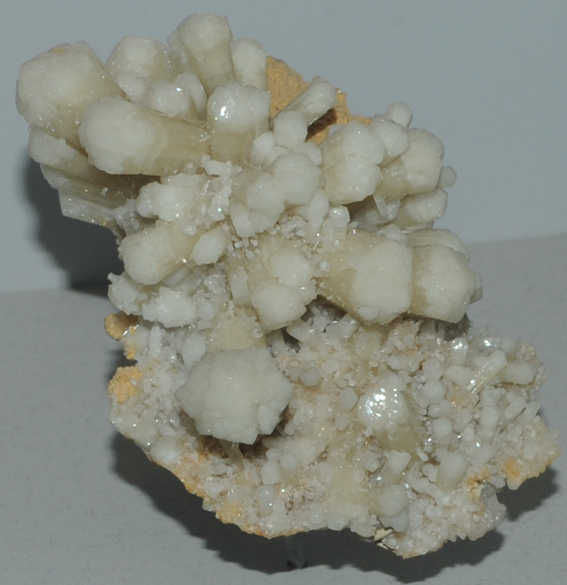 |
This sample of Aragonite is about 5x8 cm and originated in Tsumeb, Namibia. It is described as zincian aragonite. |
This sample of aragonite is from Eisenerz, Styria, Austria. It grew on a cave wall. When miners encountered aragonite formations like these in Austrian iron mines, they named the clusters flos ferri, Latin for "flower of iron". This aragonite sample is about 14 x 14 cm. |
 |
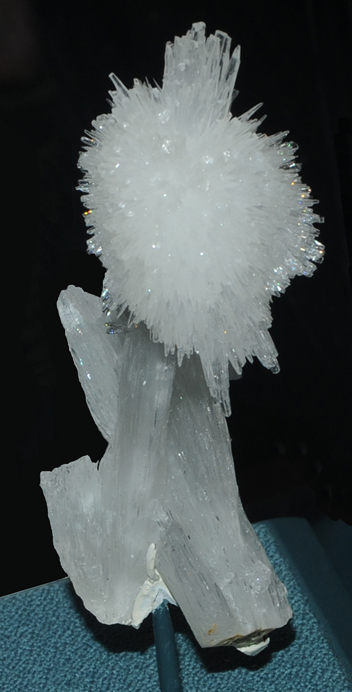 |
The Aragonite sample at left is about 4 x 14 cm. It is from Tintic district, Utah. Two generations of aragonite formed under different conditions. The coarse, needlelike crystals grew first, the crystal sprays later. 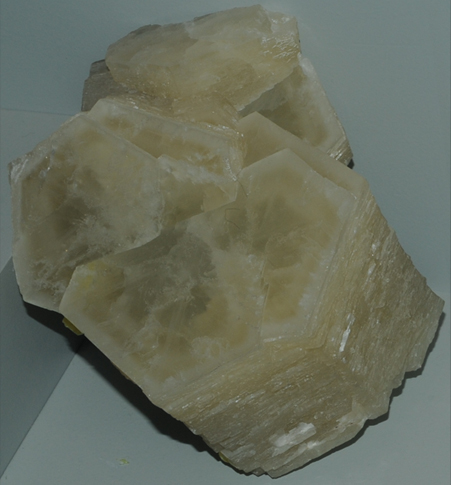 This sample of aragonite is from Agregento, Sicilia, Italy. It is about 12x12 cm. |
This sample is described as aragonite with goethite. It is from Podrecany, Czech Republic. This specimen shows one of aragonite's typical crystal shapes. This Aragonite sample is about 25 x 30 cm. |
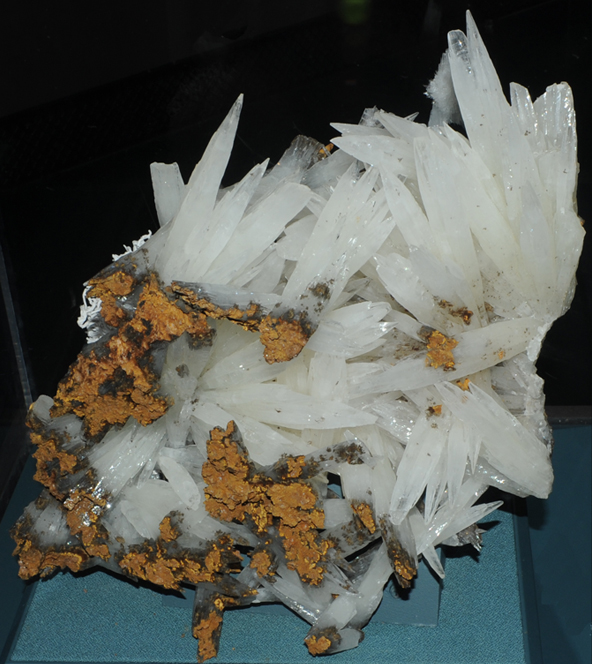 |
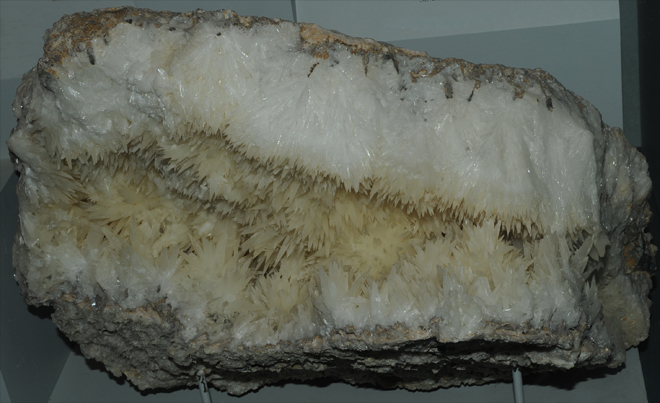 |
This Aragonite sample is about 30 cm long. |
This delicate aragonite structure is from Cave of Bells, Santa Cruz County, Arizona. Such structures form from the calcium and carbonate-rich water in the cave. This Aragonite sample is about 16 x 25 cm. |
 |
Mindat: Aragonite
| Minerals |
| HyperPhysics*****Geophysics | R Nave |